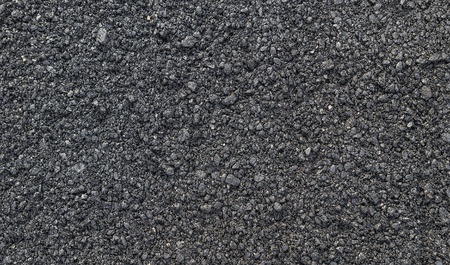Hot Mix Asphalt Paving: Elevating Commercial Parking Lot Requirements
Hot Mix Asphalt Paving: Elevating Commercial Parking Lot Requirements
Blog Article
Unlocking the Tricks of Hot Mix Asphalt Innovation
Exploring the depths of warm mix asphalt modern technology discovers a globe where meticulous procedures and specific solutions converge to form our roadways and infrastructure. The fusion of binders, fillers, and aggregates isn't merely a building task but a calculated orchestration of durability and effectiveness.
Significance of Hot Mix Asphalt
Warm Mix Asphalt plays a crucial role in contemporary facilities growth due to its durability and cost-effectiveness. As the most typically utilized paving material for roads, highways, and vehicle parking great deals, Warm Mix Asphalt uses an array of advantages that add to its importance in construction projects.
The toughness of Warm Mix Asphalt originates from its make-up, which consists of accumulations, binder, and filler materials that are thoroughly chosen and mixed to meet specific efficiency needs. This specific mix leads to a flexible and strong sidewalk that can sustain regular use without significant wear and tear. Hot Mix Asphalt is 100% recyclable, more boosting its sustainability and ecological benefits. Overall, the importance of Warm Mix Asphalt in framework advancement can not be downplayed, as it continues to be a cornerstone of modern building and construction techniques.
Elements of Asphalt Mixes
The structure of asphalt blends consists of very carefully picked aggregates, binder, and filler materials that are vital for attaining particular efficiency requirements. Accumulations are the key component of asphalt blends, giving strength and stability. The binder, usually asphalt or asphalt concrete, holds the aggregates together and supplies adaptability and sturdiness to the mix.
The mix and percentage of these components play a substantial role in identifying the high quality and efficiency of the asphalt mix. Designers carefully design the mix to satisfy particular demands, taking into consideration elements like website traffic quantity, climate conditions, and sidewalk life-span. Proper choice and harmonizing of accumulations, binder, and fillers are necessary for producing sturdy, resilient asphalt pavements.
Mixing and Production Techniques

Once the aggregates are chosen, the binder, commonly asphalt concrete, is included in bind the products with each other. The binder's high quality and amount significantly influence the mix's resistance, strength, and flexibility to ecological variables. Additionally, fillers like hydrated lime or Rose city concrete might be included to enhance certain attributes of the asphalt mix, such as its workability or wetness resistance.
During manufacturing, the accumulations and binder are heated up, usually between 250-325 ° F(121-163 ° C ), to help with blending and make certain appropriate finishing of the aggregates. The blending process should be thorough to attain an uniform mixture that advertises the preferred performance features of the asphalt. Different techniques, such as set mixing or drum mixing, are used to accomplish top notch and consistent asphalt blends for building projects.
Aspects Affecting Asphalt Efficiency
Variables influencing asphalt efficiency incorporate a variety of variables that influence the sturdiness, longevity, and general quality of asphalt pavements. One vital factor is the high quality of products made use of in the asphalt mix.

Environmental problems additionally influence asphalt efficiency. Temperature variants, dampness seepage, and traffic tons can all influence the structural honesty of the pavement. Style factors to consider, such as pavement density and drainage, are necessary in guaranteeing the long-lasting efficiency of the asphalt pavement. By very carefully considering these engineers, specialists why not check here and variables can optimize asphalt performance and improve the solution life of sidewalks.
Sustainable Practices in Asphalt Technology

WMA enables for the manufacturing and positioning of asphalt blends at lower temperatures compared to standard hot-mix asphalt, resulting in lowered power consumption and greenhouse gas emissions. The use of porous asphalt mixes can help alleviate stormwater runoff issues by enabling water to infiltrate through the pavement and into the ground, promoting all-natural water filtering and reenergize processes.
Conclusion
In verdict, warm mix asphalt technology plays a critical role in modern-day framework growth due to its toughness and cost-effectiveness. By meticulously stabilizing parts, using correct blending techniques, and thinking about numerous elements, engineers can produce premium asphalt blends that endure rush hour tons and harsh climate condition. Accepting lasting techniques, such as using warm-mix modern technologies and recycled materials, additionally boosts the environmental kindness of asphalt modern technology.
Mixing and production strategies in warm mix asphalt technology include the specific mix and processing of aggregates, binder, and fillers to produce a durable and high-performance asphalt mix.Aspects affecting asphalt performance include a range of variables that influence the longevity, long life, and general top quality of asphalt pavements. Sustainable methods in asphalt technology include different efforts aimed at decreasing the environmental influence of asphalt manufacturing and paving procedures. By integrating reclaimed asphalt sidewalk (RAP) and recycled asphalt roof shingles (RAS) into new asphalt blends, the market can blog significantly lower the usage of raw products and energy, while additionally decreasing land fill waste.
WMA allows for the manufacturing and positioning of asphalt mixes at reduced temperatures contrasted to traditional hot-mix asphalt, resulting in minimized energy usage and greenhouse gas exhausts.
Report this page